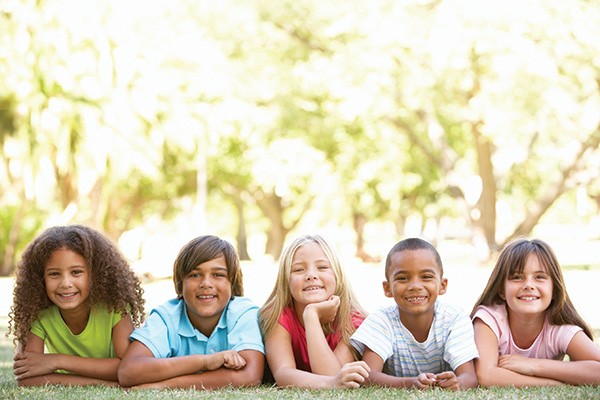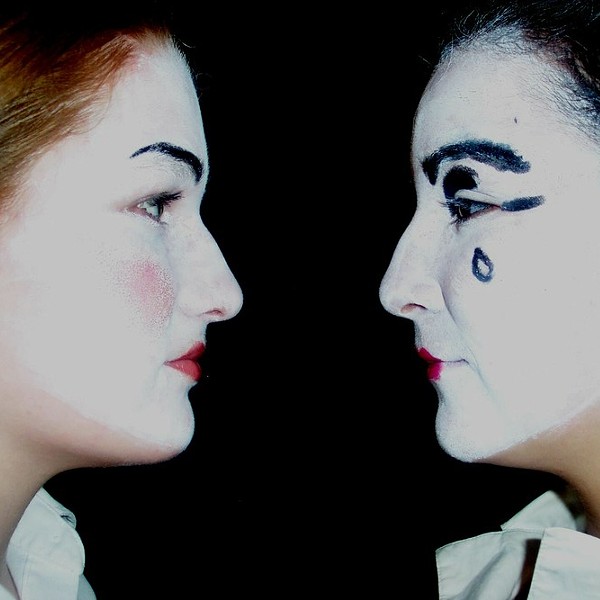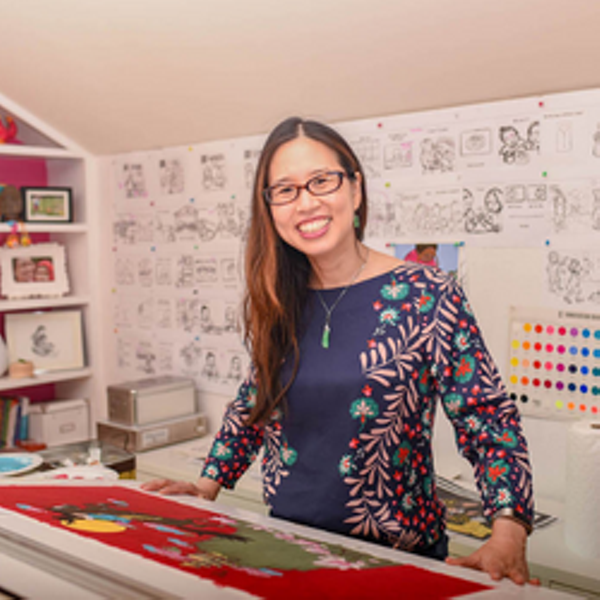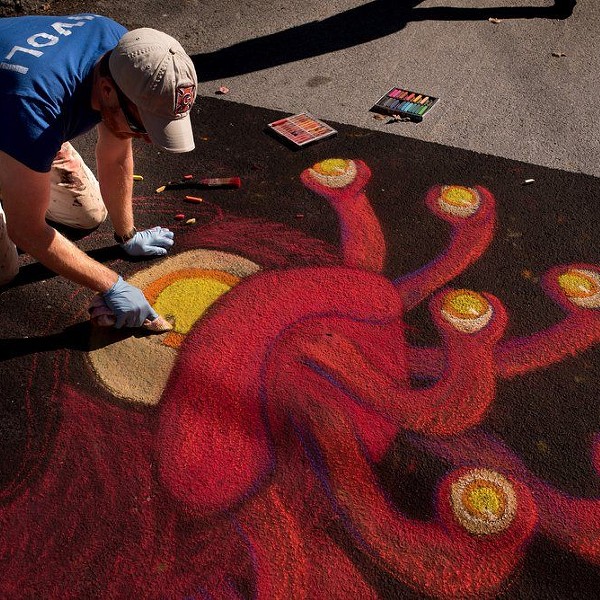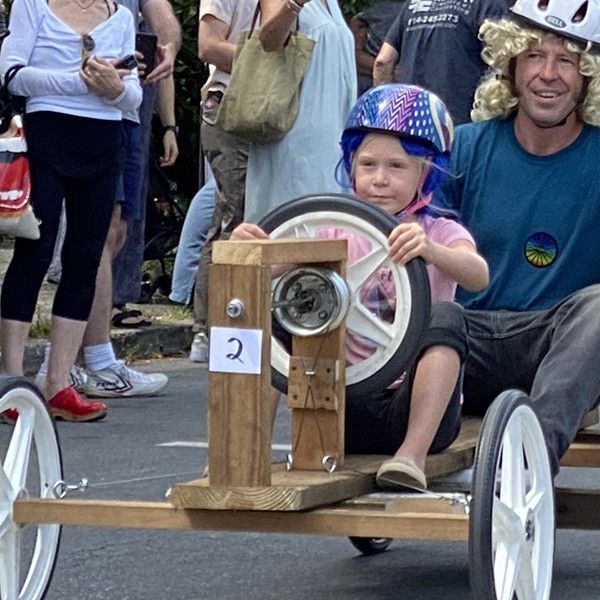I grew up in a 99 percent white, mostly Catholic small town upstate. Like many other young girls in the mid-'80s, I desperately wanted a Cabbage Patch Kid. The shelves were mostly cleaned out, except for a handful of black Cabbage Patch Kids. My sisters and I each wanted one, and asked our parents to get them. My father didn't say anything, but he made it clear he was uncomfortable. My sisters and I left the store empty-handed, wondering what the big deal was.
We've made great strides in our country since the days of segregation, but there are frequent reminders of how far we have left to go. Race is still a loaded topic, and racism is more pervasive than we'd like to admit. Parents, particularly white parents, are uncomfortable discussing race. While I pride myself on my candor on any number of topics, race remains daunting.
When my husband and I moved to Kingston and started a family, I loved knowing my three children were growing up in a much more diverse place than I did. Yet I wasn't sure if I should call attention to this. While we understand our kids start to distinguish gender as "pink" and "blue," most parents behave as if our children don't see the difference between "white" and "brown." We are comfortable talking about traditional boy-girl stereotypes with our kids in an effort to combat them, but we worry that by calling attention to racial differences, we will cause our kids to develop a racial construct. We think that by avoiding the topic, we keep them immune to bias. However, more and more research suggests that by failing to address race, our children are more likely to make assumptions based on color.
Po Bronson and Ashley Merryman devoted a chapter to this research in their book Nurtureshock called "Why White Parents Don't Talk About Race." They highlight Dr. Birgitte Vittrup's PhD dissertation, which looked at whether children's videos with multicultural story lines had an effect on children's racial attitudes. About 100 white families were recruited, and their racial attitudes were measured using the Racial Attitude Measure, a series of questions designed by Vittrup's mentor, Dr. Rebecca Bigler. Vittrup intended to measure those attitudes after parents followed the guidelines she assigned to them. Interestingly, when she asked one-third of those parents to discuss interracial friendship, families began to drop out of the study; other families did not have the discussion as instructed. Only six families followed through; all six of their children greatly improved their racial attitudes when they were reassessed.
White Is the Default
In September, my son was pointing out two new friends down the street—both had dark hair, brown eyes, and the same color shirt; the only difference was skin color. He confessed to feeling guilty verbally distinguishing skin color as a means to differentiate between the two boys. I understood his discomfort.
Like many modern parents, the politically correct culture of our childhood implied that we should pretend not to notice skin color. As a result, many of us have a fear of saying something ignorant or offensive, which I believe has been damaging and has prevented progress toward true diversity. I talked to Sakinah Irizarry, a black mother of two and a massage therapist in Saugerties, knowing she had discussed a racially sensitive topic with a mutual friend. "I don't believe in colorblindness. It's a poor concept that got started when we were children and we are reaping the results of it today," she agreed. "Verbalizing differences isn't the issue. Characterizing those differences as a race-wide pathology, that's an issue."
Even the label "African-American" can feel biased. "White is considered the default and everyone else gets an added identifier that isn't even necessarily accurate," Sakinah noted. Imagine how odd and often inaccurate it would feel if we referred to white people as European-American.
Studies also show that black parents tend to broach race earlier because they want to prepare their children for their part in a diverse world, including the possibility of discrimination.
Sakinah shared that she had already begun to help her boys value how they are different from their friends. "I have pointed out to them pictures in books or characters on television and drawn their attention to how the character looks like them. I have read them age-appropriate books that talk about skin, eye, hair color, texture," she elaborated. But she acknowledged that more explicit conversation was not simple for her either. "I have not used 'black' or 'white as much as perhaps I should. My husband is Hispanic, so I tend toward the all-encompassing 'brown.' I realize that I may not have done so even as much as my own family did growing up."
Race to Talk Race
Many parents think their children are too young to understand and wait for their kids to start asking questions. Yet, even in infancy, babies stare longer at a face of someone of another race, suggesting they recognize the difference. Kids are not blank slates or sponges. They actively create concepts based on what they observe. One of the ways children tend to try to make sense of those observations is by visual sorting. Multiple studies have shown that the racial bias children might display in preschool has less to do with the racial attitudes of their caregivers and more to do with the fact that they are prone to seeking "sameness" by focusing on an external factor. They are not able to categorize multiple characteristics simultaneously, so they latch on to the most obvious characteristic, often race or gender.
Bronson and Merryman mention another study in which preschool children were assigned a T-shirt color to wear every day. Even in the classroom where the teacher did not acknowledge the colors, children still developed a bias in favor of their assigned color (i.e., "Reds are the smartest!"), demonstrating how kids are developmentally prone to in-group preferences.
Meaningful antibiased discussion often tends to be too late. Some research suggests that the window of opportunity to prevent bias closes by third grade. Even when white parents broach the subject earlier, they often stick to the vague "everyone's equal" or a similar variation, but this is too abstract to be effective.
When kids verbalize their observations on racial differences, our impulse is to shush them. Doing so can be damaging because it unintentionally implies that there is something bad about our differences. Instead, experts advise parents to provide a calm, neutral response, allowing these observations to become teachable moments.
The Conundrum of Diversity
Sending kids to a diverse school isn't enough. Some research has found that integrated schools don't necessarily lead to more interracial friendships. Dr. James Moody, a professor at Duke University, conducted a study on diversity in schools (also mentioned in Nurtureshock), in which he found that the more diverse the school, the more kids self-segregate. One exception was that for every extracurricular activity white students share with students of another race, the more likely they are to develop interracial friendships.
Dr. Moody's work focuses on how teens form social networks, but he has not done further research on race integration. His opinion on how schools could inhibit self-segregation? "I think if academic goals can be seen as common, collective goals, then they might help promote integration—but if left to individual pursuits or, worse, seen as a competitive feature (focus on class rank, etc.), then they might exacerbate self-segregation," he says. "This is one of those features we just don't have the research on right now, as the data are so difficult to collect."
It's Only as Awkward as You Make It
"Ask your kids to take notice that people of different races and backgrounds look different," Irizarry advises. "Teach your kid that everyone doesn't look like you, speak like you, live like you."
After Trayvon Martin was killed, Catherine Perlman, a social worker and professor at the College of New Rochelle, wrote about the importance of talking about race with our children in the Wall Street Journal. "Be curious and humble. People generally appreciate your willingness to learn about them," she suggested. "Talking about race is about as easy as the birds and bees. It can be awkward and uncomfortable. But, ultimately, a discussion with your children about race will open up the avenue to important future dialogues."
The Leadership Conference on Civil Rights Education Fund goes into more detail. "By speaking openly about similarities and differences between people, we can raise children whose lives are not constricted by fear. By joining with them to recognize and talk about discrimination, we will help our children become adults who work to end it. By encouraging our children to reach across racial and ethnic lines, we will enable them to lead richer, fuller lives and to recognize the humanity of all people."
An article by Lousie Derman-Sparks, Carol Tanaka Higa, and Bill Sparks on Teaching for Change echoes some of this advice: "Children will 'naturally' grow up to be nonracist adults only when they live in a nonracist society. Until then, adults must guide children's antiracist development. This will include the fostering of: 1) accurate knowledge and pride about one's racial/cultural identity; 2) accurate knowledge and appreciation of other racial groups; and 3) an understanding of how racism works and how to combat it."
Continuing the Dialogue
I wondered about parents in my hometown upstate. For those who don't live in a diverse community, how can they promote diversity? Books and websites abound with advice, much of it practical yet simple:
Read picture books that feature families of other races and ethnicities.
Engage them in media that show positive examples of diversity.
Get them multicultural crayons and markers so they can draw people of all colors.
Seek out opportunities to expose them to people who aren't like them, like minority church events and cultural festivals.
Download one of the apps from the Race Awareness project, which were created to help get people talking about race in an entirely new way.
All of these things can lead to more meaningful conversation.
In her blog, Rage Against the Minivan, writer and marriage and family therapist Kristen Howerton advises readers to take an inventory of their home's diversity. "Are your toys sending a subtle message?" she asks.This got me looking at my own home, and it was pretty convicting. My girls love dolls, but their selection is not much more diverse than my own as a child. Which shows me that while we've already begun a dialogue, there is still much more I have to do if I hope to raise kids who value and further diversity.







